peregrination :: Ireland 2003
Sunday, 6 July 2003
Today was the last day in Dublin before the long trip home. But there were still things to see and places to go, so off I went. As I was leaving my VERY humble room for the last time, I took some photos to show what kind of place I’d been staying in. The triptich below tells the bleak story.
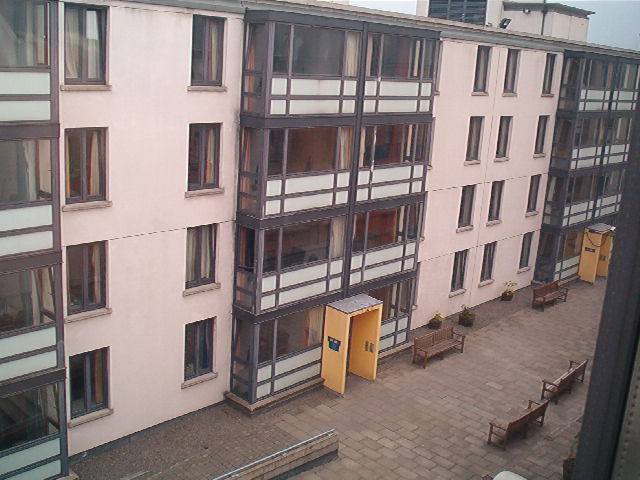
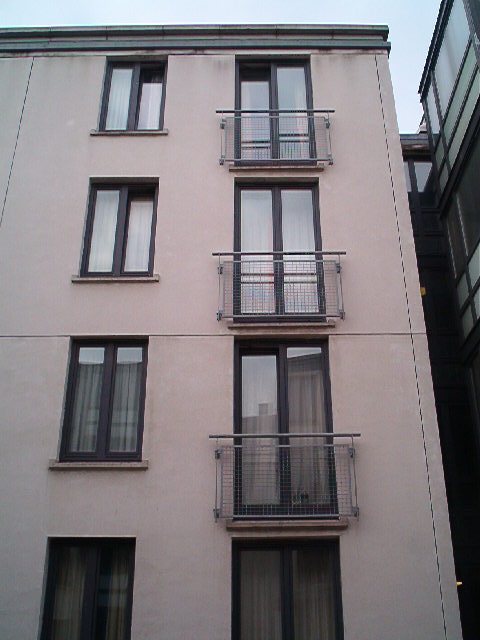
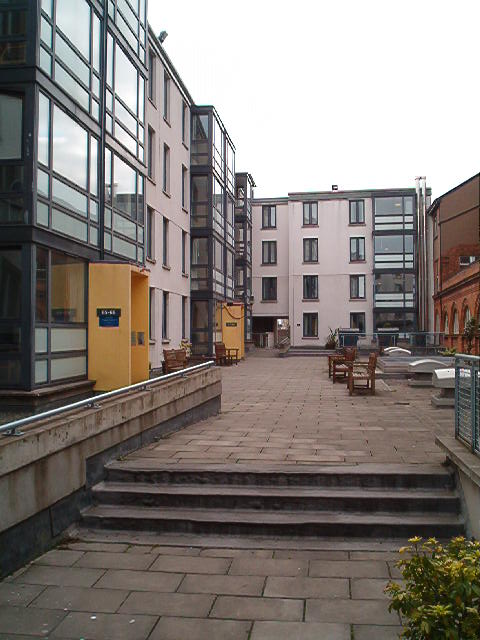
The buildings were built around the 1970s (I think) and had some bizarre characteristics; for example, my room – which is for visiting staff at Trinity College – comprised a smalll bedroom with a single bed, a tiny bathroom, and living room/kitchenette, with a tiny corrior off which each room opened. The entry to the room was a fire door (heavy and not to be propped open) and the doors to the bedroom and the living room were also fire doors! I was constantly going through heavy, self-closing doors. And this was staff accommodation. The room had primitive kitchen facilities (ie, a kettle and a toaster), but no crockery, cutlery or anything for washing up. At £50 (GBP) a night it was a monstrous rip-off. The alternatives in Dublin are all pretty expensive though, so what can you do.
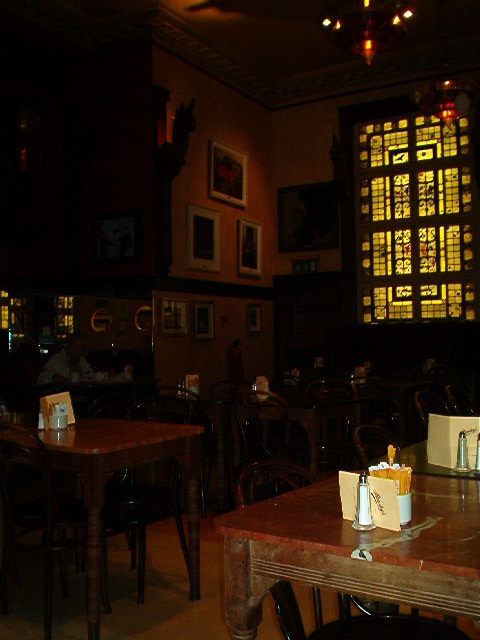
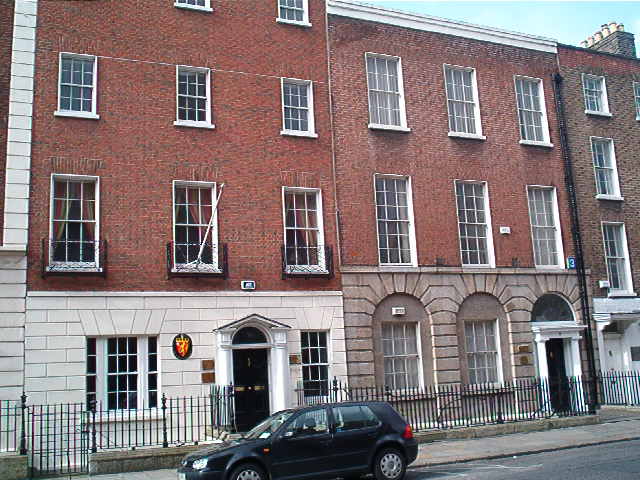
Once I got to the Dial (just down the road from the embassies) I discovered (as I was to do frequently over the next hour or two, that nothing happens in Dublin on Sunday except between 2:00pm and 5:00pm. Again, coming from Canberra where most everything touristy is open seven days a week 9:00am to 5:00pm, this was a big dissappointment. So, on I plodded.

After calling Kate, I walked on around the block I was circumnavigating on my way to Merion Square. Eventually, I came to the part of the block that is opposite the Dial – the back of the Dial – and was greeted by the imposing “Government Offices“. This is a truly impressive collection of architecture surrounding the country’s seat of parliament. The first picture shows the rear of the Dial (formerly Leinster House), and then the second photo shows how impressive the total building area is from the street.
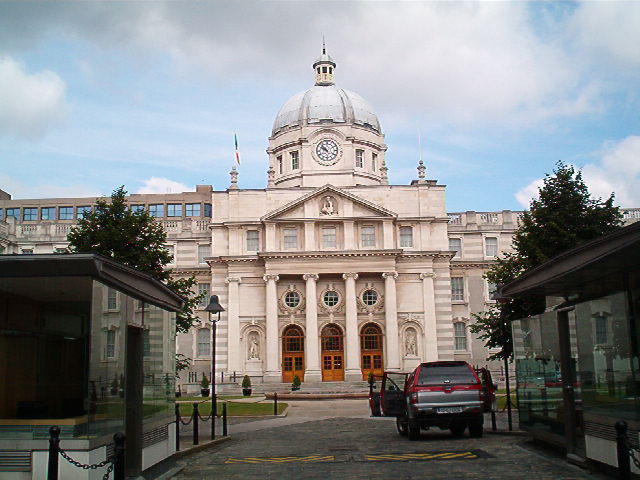
(Actually, as I write this, perhaps it is actually the front of the Dial and the other shot is from the rear.)
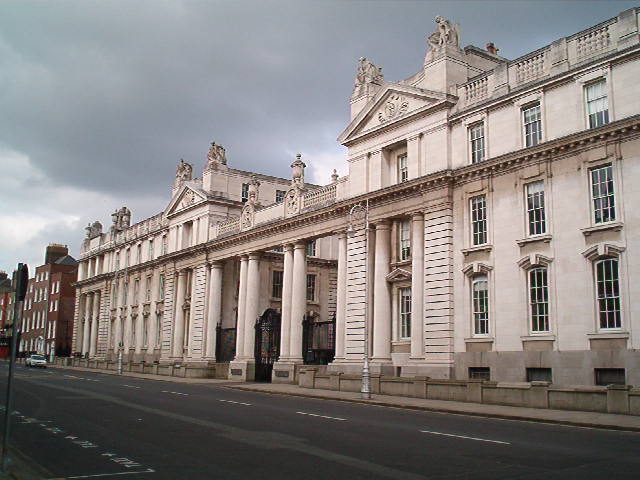
While I was wandering around trying to work out how to capture the impressiveness of the Government Offices, I wandered down a lane that revealed the backs of the terraces that face onto Merion Square. I took the opportunity to photograph the bits of the housing you never really see. I photographed the front of the same terrace and they are shown together below. Importantly, in keeping with Dublin tradition, all the houses’ doors are different colours – apparently it helps drunken Irishman find the right house – and in Merion Square, they spare no effort in making the door look flash.
Finally, I was back on Merion Square, having travelled through by bus on the first day and lived around the corner, I finally visited the square on my last day. And it was worth the visit (somewhat surprisingly). Of course, Merion Square is famous for Oscar Wilde having grown up there. The first photo in the pair shows the house in which he was raised; the second shows the rest of the street. It was not a wildly salubrious place in architectural terms, but it did have two key factors in its favour: it was a centre of the wealthy and political elite, and Merion Square itself, is a gorgeous park.
The triptich below shows three different views of Merion Square, from inside. The walk around the square looking for a gate by which to enter (they were being unlocked as I walked around) led me past a long line of artists displaying their wares on the fences surrounding Merion Square. This apparently happens every Sunday morning. There were some quite lovely pieces, but none worth the hassle of shipping home.
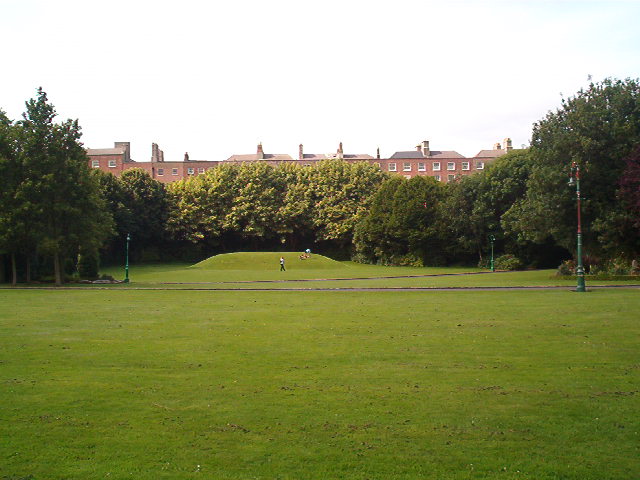
(note how little of the surrounding houses are visible)
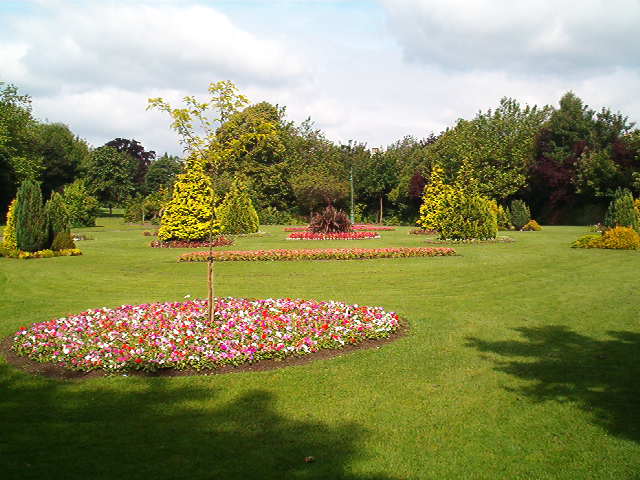
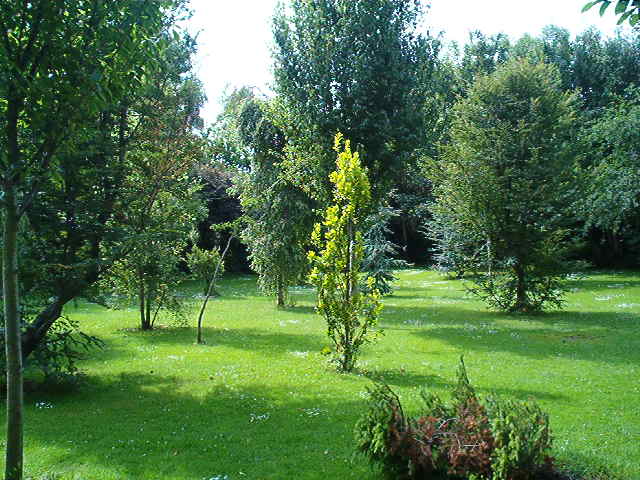
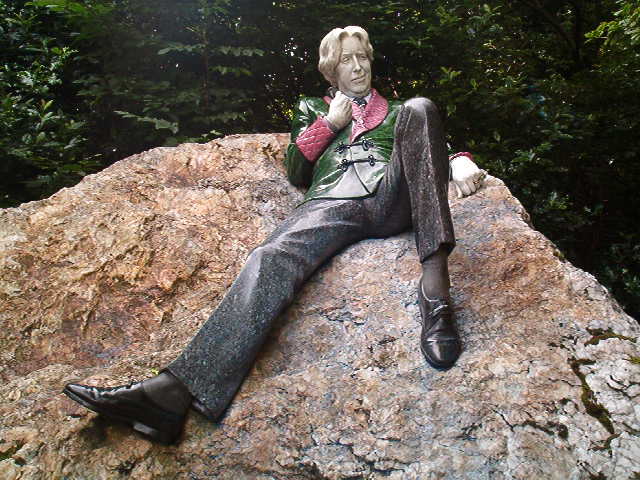
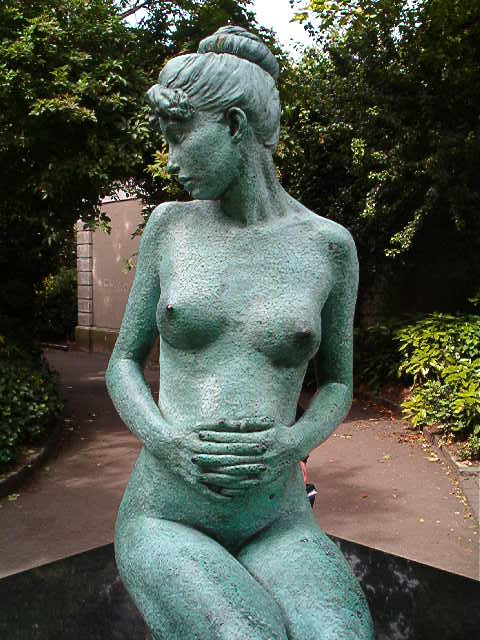
I had one more place to call upon; Customs House on the River Liffey. This amazing building had caught my attention on the train in on the first day and I was keen to see it close-up and read of its history. After my relaxing sojourn at Merion Square, I wandered off towards Customs House.
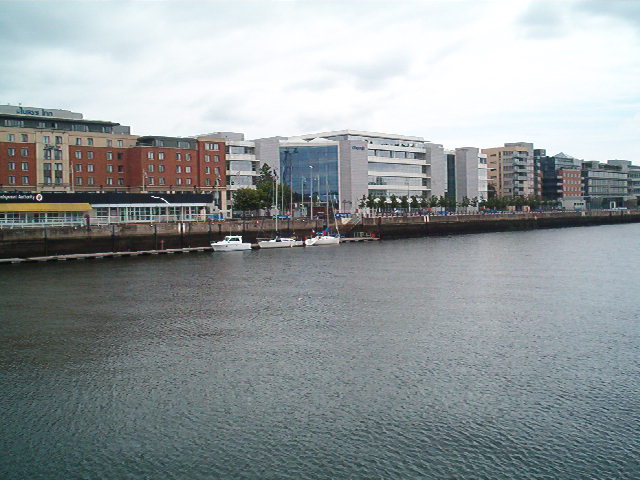
Also, while I was walking to Customs House, I took this photo of what I believe to be the tallest building in Dublin; frankly not very impressive as height goes! But that was one of the things I liked about Dublin (and ‘old’ London when I visited it 13 years ago) – it was built on a human scale. You never feel like you are lost in an urban canyon. Everything feels “human-sized”. I really like that.
Finally, I came to Customs House, and it is truly a spectacular building from across the Liffey. By the time I got the place my worst fears were confirmed and it was not open to the public; certainly not on Sunday. But I did get to walk around it and took the photos below.
![Dublin's tallest building? [at the time]](../../../images/blogs/Ireland2003/Tallest Building.jpg)
[at the time]
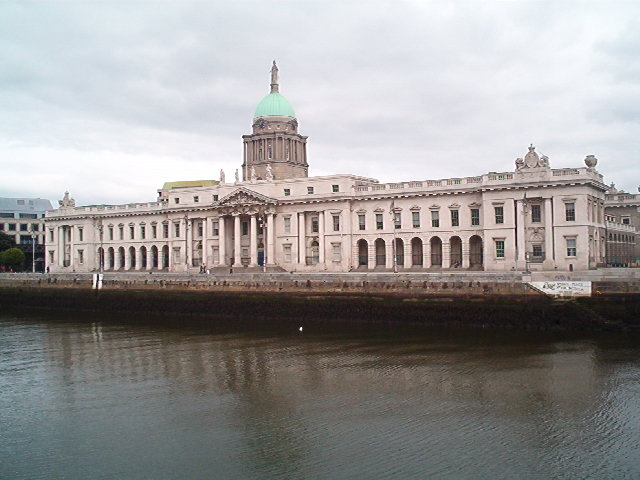
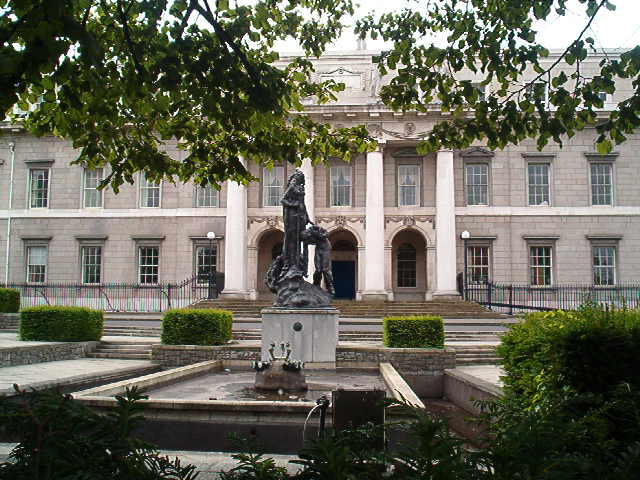
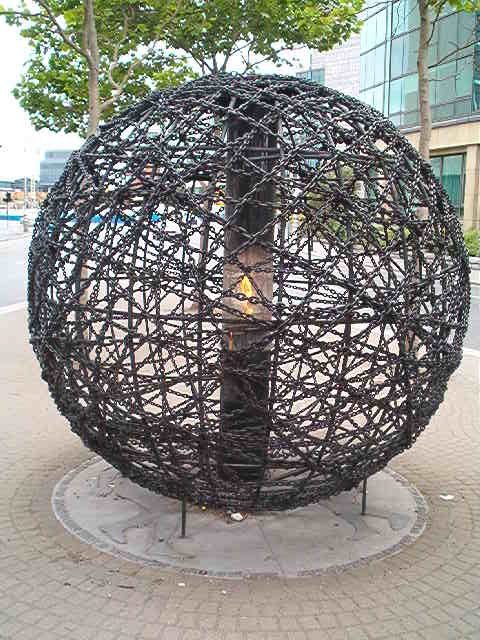
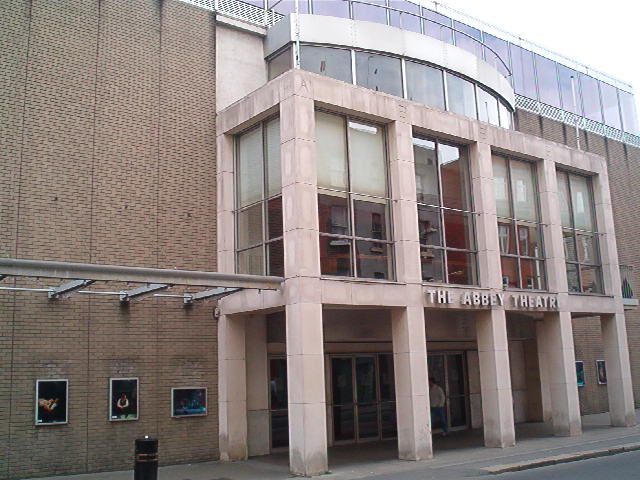
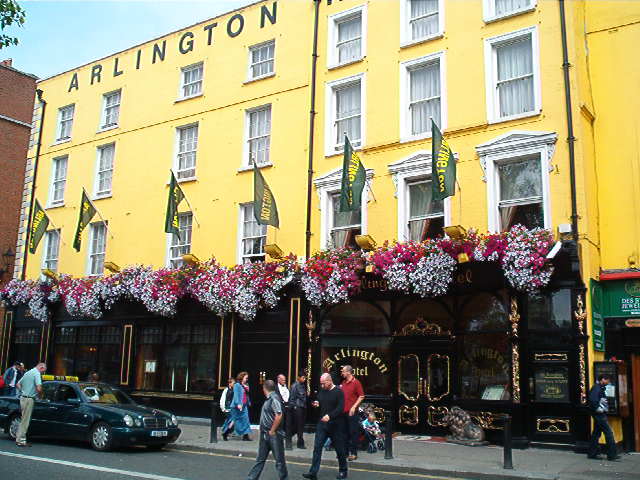
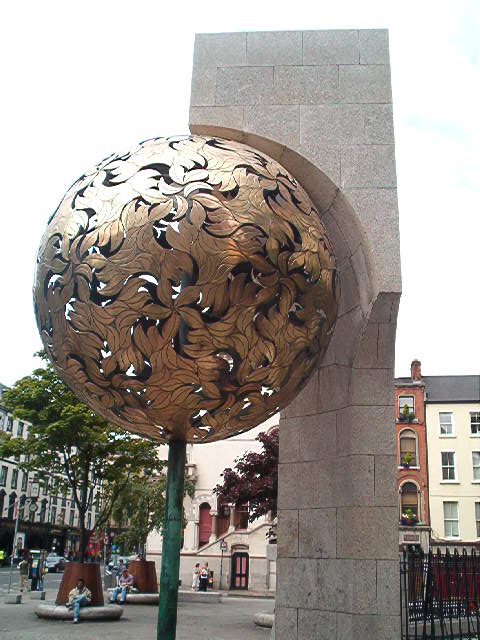
[Sculpture name and creator added later]
The exhibition was a little disappointing in that it was less street-scene and more street-person etchings. They were fascinating for themselves, but I had hoped to see more of what Dublin once looked like. As I walked through some of the rest of the gallery I noticed that a huge majority of the works that I saw were portraits. Someone recently said that you can tell alot about a nation by the pictures it collects. I like to think that this (limited) observation suggests that the Irish treat their heros very seriously. My limited understanding of their history suggests I may not be too incorrect
One final observation has to be made about the National Gallery and its ability to reflect Ireland, and my views on Dublin. There are two main entrances to the national gallery, both shown below.
One is the original entry to the original (probably Georgian) building that houses the gallery. The other is the entrance to the new Millenium wing. The juxtaposition of the traditional old-world, regal, Dublin with the (almost ultra-)modern new wing tidily draws some of the struggle that I think Dublin is slowly coming to grips with. It is a city with over 1200 years of history, and has just recently been hailed as “the Celtic Tiger” because of recent economic successes. The reconciliation of being a city steeped in grand history and representing itself as a new, modern, European powerhouse is still an ongoing struggle. I personally prefer the grandeur of bygone times, but I think that Dublin (and Ireland through it) probably needs the benefits that economically-powerful modernity will bring it. So long as they remember and respect their past and continue to worship their heros, they’ll probably come along just fine!
So, after a very pleasant lunch at the National Gallery, I headed off to the airport early – I thought – as there was nothing left for me to want to overcome the pain in my feet from the huge blisters I now had. I wandered back to Trinity College to collect my bags, and then up to the Tourist Centre to await the coach to the airport. One went right by me like I was mad to want to get on! I thought maybe he was finishing his run and another would be along shortly. Well, it wasn’t. Eventually, an ordinary Dublin bus bound for the airport showed up so I climbed on that.
Conversation with the bus driver
“Can you take me to the airport?”
“Aye. But it will take a while.”
“How much of a while?”
“Well the M1 is down to one lane, so it might be as much as half-an-hour, 40 minutes.”
“No problem. I’ve got hours.”
90 minutes later we finally got past the huge traffic jam and on to the airport. It was this quick largely because the young bus driver took absolutely no chance of being cut-off or held back or left out of any opportunity to get there faster. At one stage he actually winged a pedestrian who was stupid enough to try to cross in front of him!
Having reached the airport with much less time to spare that I had anticipated, the rest of the journey followed the expected routine: get in a long line, move slowly to the front, perform some trivial task, join another long line to get to the next trivial task. But it was always moving and I never felt that I might miss my plane. It just took a VERY long time. I had left Dublin central at 2:15pm for a 5:00pm flight and did not get a chance to do more than buy a bottle of water before we were called to board. The bus ride, the long queues, my sore feet; a long time!
And that’s pretty much my adventure in Dublin. Overall, I enjoyed myself. There’s some things I woudl do again, or try to do at all yet in Dublin, but my next trip to Ireland will definitely have to schedule in more of the country and less of that one city.

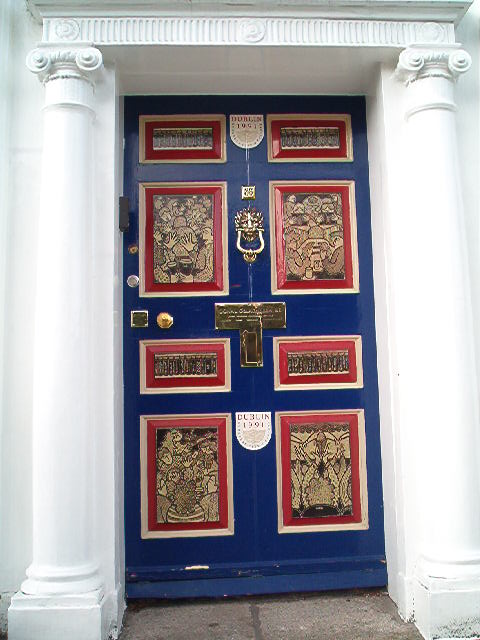
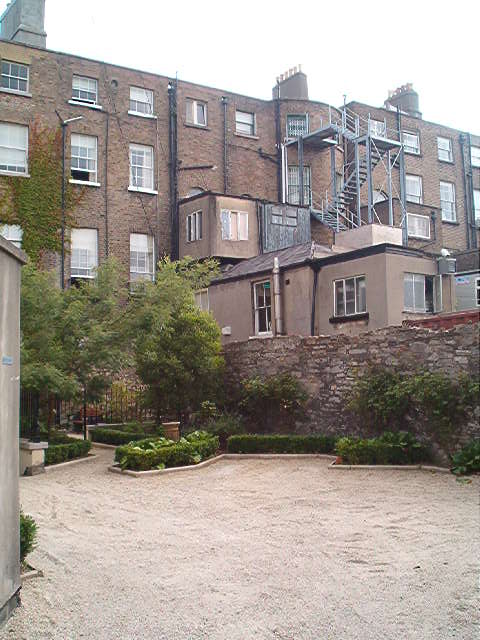
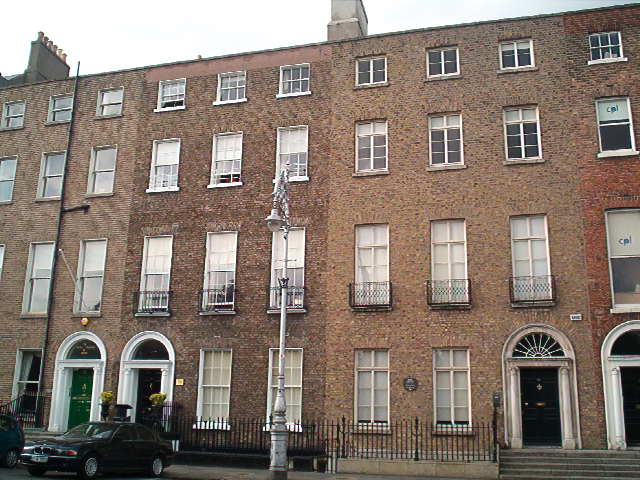
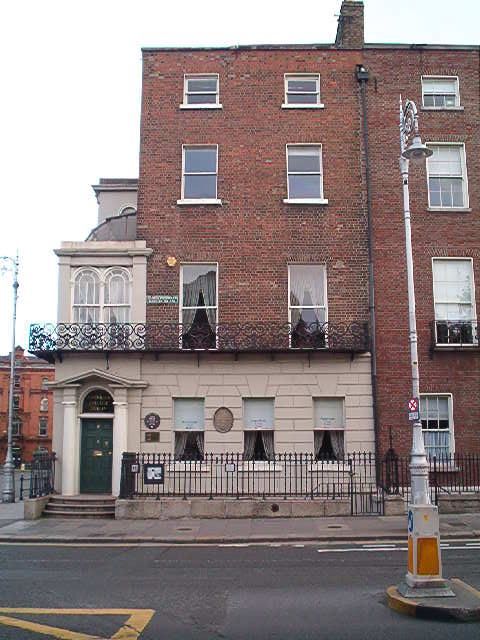
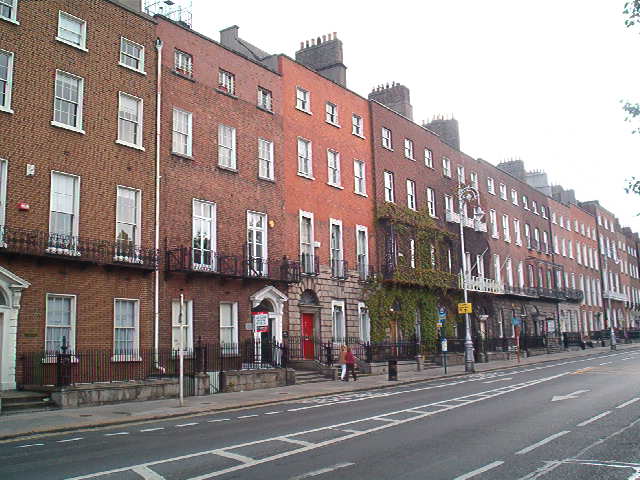
.jpg)
.jpg)